Use VCE Exam Simulator to open VCE files
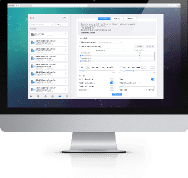
NSE5_FSM-6.3 Fortinet Practice Test Questions and Exam Dumps
When storing anomaly baseline data that has been calculated for various parameters, which type of database is typically used to hold this data?
A. Event Database (Event DB)
B. Profile Database (Profile DB)
C. Source Version Control Database (SVN DB)
D. Configuration Management Database (CMDB)
Correct Answer: B. Profile Database (Profile DB)
Explanation:
In the context of storing anomaly baseline data that is calculated for different parameters, the Profile Database (Profile DB) is typically used to store this type of data. Here's a breakdown of each option:
A. Event Database (Event DB)
An Event Database is generally used to store events, logs, and other real-time data generated by systems or applications. This type of database typically focuses on event tracking and logging, rather than the long-term storage of calculated baseline data for anomalies. While events are related to monitoring, the database used for anomaly baselines is usually more specialized for storing profile data over time. Therefore, Event DB is not the correct choice.
B. Profile Database (Profile DB)
The Profile Database is specifically designed to store profile data, which includes baseline information and other metrics related to system performance, behavior, and anomalies. It typically holds data that can be used for comparisons and analysis to detect anomalies in future system performance. For this reason, the Profile Database is the most appropriate option for storing anomaly baseline data.
C. Source Version Control Database (SVN DB)
A Source Version Control Database (such as SVN or Git) is used to store the history of code changes, source files, and versions. It is not used for storing performance data or anomaly baselines. Therefore, SVN DB is not relevant for this use case.
D. Configuration Management Database (CMDB)
A Configuration Management Database (CMDB) is used for storing information about the configuration of IT assets and services within an organization. It includes details like hardware, software, network configurations, and relationships between components. While a CMDB stores configuration data, it does not typically store performance metrics or anomaly baselines. Thus, the CMDB is not the right choice for storing anomaly baseline data.
For the storage of anomaly baseline data, Profile Database (Profile DB) is the most appropriate choice (Option B), as it is designed to handle the type of data related to system performance and anomaly detection over time.
Which two components of FortiSIEM collaborate to deliver real-time event correlation?
A. Supervisor and Worker
B. Collector and Windows Agent
C. Worker and Collector
D. Supervisor and Collector
Correct Answer: A. Supervisor and Worker
Explanation:
FortiSIEM is a comprehensive Security Information and Event Management (SIEM) platform designed to provide real-time event correlation, monitoring, and analysis. The platform is built with multiple components that work together to gather data, correlate events, and provide valuable insights into the security posture of an organization. To achieve real-time event correlation, certain components must work together efficiently. Let's break down each option and clarify which two components are responsible for this important function.
The Supervisor and Worker are the key components in FortiSIEM that are responsible for event correlation in real-time.
Supervisor: The Supervisor node in FortiSIEM is responsible for managing the overall coordination of the system. It handles the event processing, user interfaces, and directs tasks like alerting and reporting. The Supervisor is essentially the "brain" of the FortiSIEM setup, managing and overseeing the event processing workflows.
Worker: The Worker nodes are distributed components responsible for the actual processing of events. They handle the ingestion, parsing, and correlation of events generated by various data sources like network devices, servers, and applications. Workers perform the heavy lifting when it comes to processing events and applying correlation rules to detect security incidents.
Event Correlation: These two components work together to achieve real-time event correlation. The Worker nodes collect and process events from various data sources, while the Supervisor coordinates and manages the overall event correlation, ensuring the system identifies potential threats in real-time. Therefore, Supervisor and Worker (Option A) collaborate directly to perform real-time event correlation in FortiSIEM.
The Collector and Windows Agent are not the primary components responsible for event correlation in FortiSIEM. While both play important roles in gathering data, they do not directly handle the correlation of events.
Collector: The Collector component is responsible for gathering raw log data from various sources (e.g., devices, servers, applications) and sending it to FortiSIEM for processing. The Collector ensures that events are consistently captured from the network, but it doesn't perform event correlation itself. Instead, it acts as the data collection point.
Windows Agent: The Windows Agent is installed on Windows systems to gather logs, system events, and performance metrics. It sends this data to the FortiSIEM Collector, which then forwards the data to the Worker or Supervisor for further processing. The Windows Agent primarily focuses on collecting information but does not contribute directly to event correlation.
While both the Collector and the Windows Agent are necessary for gathering and forwarding data, they do not perform real-time event correlation. Therefore, Collector and Windows Agent (Option B) do not directly collaborate to achieve real-time event correlation.
The Worker and Collector work together in the sense that the Collector gathers log data and sends it to the Workers for processing, but they are not responsible for real-time event correlation. Instead, the Workers focus on processing the data they receive and applying correlation rules, but the ultimate coordination and management of this process are handled by the Supervisor.
Collector: As mentioned earlier, the Collector's job is to collect and forward the raw logs or event data from various devices and systems.
Worker: The Worker is responsible for processing and analyzing the data that has been collected. While Workers process data and apply correlation rules, they do not perform the final coordination or event correlation oversight, which is a task managed by the Supervisor.
In summary, while the Worker and Collector work together in the data pipeline, they are not responsible for managing or overseeing the entire correlation process. Thus, Worker and Collector (Option C) do not directly collaborate to provide real-time event correlation.
The Supervisor and Collector are two distinct components that perform different roles within FortiSIEM.
Collector: The Collector is responsible for gathering data from various sources, including network devices, servers, and applications. It captures raw logs or events and sends them to the Workers for processing.
Supervisor: The Supervisor manages the coordination of the system, including overseeing the overall process, managing configurations, and providing user interfaces for monitoring and alerting.
Although the Supervisor oversees the entire SIEM infrastructure, it does not directly perform event correlation. Instead, this task is carried out by the Workers, under the coordination of the Supervisor. The Supervisor plays a more high-level role, while the Collector is more focused on data collection. Thus, Supervisor and Collector (Option D) do not directly collaborate for real-time event correlation.
The Supervisor and Worker (Option A) components are the correct choice for event correlation in FortiSIEM. The Supervisor coordinates the system and directs tasks like alerting, while the Worker processes and applies correlation rules to the collected events, ultimately detecting security incidents. These two components work together to ensure real-time event correlation and the overall success of the FortiSIEM platform in identifying and mitigating security threats.
Correct Answer: A. Supervisor and Worker
In summary, event correlation in FortiSIEM is handled by the Supervisor and Worker components. These two work in tandem to ensure that real-time analysis and detection of potential threats take place efficiently, which is essential for any SIEM system aiming to provide continuous and effective security monitoring.
When setting up collectors at different geographic locations, which ports must be opened on the front-end firewall to ensure proper functionality?
A. HTTPS, from the collector to the worker upload settings address only
B. HTTPS, from the collector to the supervisor and worker upload settings addresses
C. HTTPS, from the Internet to the collector
D. HTTPS, from the Internet to the collector and from the collector to the FortiSIEM cluster
Correct Answer: B. HTTPS, from the collector to the supervisor and worker upload settings addresses
Explanation:
FortiSIEM is a comprehensive Security Information and Event Management (SIEM) platform designed to provide centralized logging, event monitoring, and correlation for organizations' security infrastructure. When deploying FortiSIEM collectors in geographically distributed locations, certain ports must be opened on the front-end firewall to ensure secure communication between the collectors, workers, and supervisors.
Each of the components in a FortiSIEM deployment plays a critical role in the functioning of the SIEM system. Collectors are responsible for gathering raw log data from various network devices and applications. These logs are then forwarded to workers, which process the data, apply correlation rules, and identify security incidents. The Supervisor coordinates the FortiSIEM system, managing configurations, user interfaces, and overseeing the overall event correlation process. For a geographically distributed setup, it is crucial to open specific ports for secure and efficient communication between these components.
An administrator is in the process of configuring FortiSIEM to automatically discover network devices and receive syslog messages from those devices.
Which of the following statements is true regarding this configuration process?
A. FortiSIEM requires privileged credentials to access the devices and make changes to their network configurations.
B. FortiSIEM automatically configures network devices to forward syslog messages using the auto log discovery process.
C. FortiSIEM automatically configures network devices to forward syslog messages through the GUI discovery process.
D. The syslog configuration must be manually set on the devices by the network administrator.
Correct Answer: D. The syslog configuration must be manually set on the devices by the network administrator.
Explanation:
FortiSIEM is a powerful Security Information and Event Management (SIEM) tool that provides comprehensive monitoring, detection, and event correlation capabilities. One of the key functionalities of FortiSIEM is to discover and collect syslog data from network devices such as routers, switches, firewalls, and other network infrastructure. However, the process of discovering devices and configuring them to send syslog data is an important step for the administrator to understand.
Let's break down the options to see why D is the correct answer:
This statement is incorrect. While FortiSIEM does require proper credentials to communicate with devices, it does not require privileged credentials to make network configuration changes. In a typical FortiSIEM deployment, the credentials are used for discovering devices and gathering logs, not for modifying device configurations. The syslog configuration on the network devices should be manually set by the administrator.
Why it's incorrect: FortiSIEM does not require privileged access to modify or configure network devices, but it does require access to discover and collect logs. The configuration of devices to send syslog messages is typically done through the device's own management interface, not through FortiSIEM directly.
This statement is incorrect. While FortiSIEM can automatically discover devices on the network, it does not automatically configure the devices to send syslog messages. The syslog configuration on the devices is typically done manually by the network administrator. FortiSIEM can discover the devices and then begin collecting the syslog data once the devices are properly configured to send it.
Why it's incorrect: FortiSIEM’s auto discovery feature helps identify devices, but the configuration of syslog forwarding must still be performed manually on the network devices. The system does not automatically alter the device configurations.
This option is incorrect for similar reasons. While the GUI discovery process allows FortiSIEM to detect devices, it does not automatically configure those devices to send syslog data. The configuration still requires manual intervention.
Why it's incorrect: The GUI discovery process helps in discovering devices and setting up monitoring, but configuring syslog forwarding is not part of this automatic process. The network administrator still needs to manually configure each device to send logs to the FortiSIEM system.
This is the correct answer. For FortiSIEM to receive syslog messages from network devices, the administrator must manually configure the devices to forward their logs to the FortiSIEM server. This typically involves specifying the IP address of the FortiSIEM server and configuring the device to send syslog messages at a particular port.
Why it's correct: Syslog forwarding is a network device configuration task, and FortiSIEM does not automatically change device configurations. Administrators need to manually configure syslog settings on network devices, specifying the FortiSIEM collector as the destination for logs.
In a production environment, network administrators are often tasked with manually configuring devices to forward syslog messages to a centralized SIEM system like FortiSIEM. This setup ensures that security logs and other critical data are sent to FortiSIEM for analysis. Syslog forwarding is typically configured on each device’s management interface (for example, via command line interface (CLI) or web-based GUI). Once the syslog configuration is complete on the devices, FortiSIEM can then start receiving and analyzing the logs.
An administrator is using SNMP and WMI credentials to discover a Windows device within the FortiSIEM platform. What types of logs will the WMI method collect from this Windows device?
Options:
A. WMI method will only collect traffic and IIS logs.
B. WMI method will only collect DNS logs.
C. WMI method will only collect DHCP logs.
D. WMI method will collect security, application, and system event logs.
Correct Answer: D. WMI method will collect security, application, and system event logs.
Explanation:
When using FortiSIEM to discover and monitor Windows-based devices, the platform can utilize various methods, such as SNMP and WMI, to gather data. WMI (Windows Management Instrumentation) is a key tool for collecting system information from Windows devices, and it can pull a wide range of log data, including security, application, and system event logs.
Let's go over each option to explain why D is the correct choice:
This statement is incorrect. The WMI method does not focus on traffic logs or IIS logs (which are related to web server access). Instead, WMI is primarily used for collecting Windows system logs, which include security, application, and system event logs.
Why it's incorrect: While IIS logs are part of the web server's log data, they are not the primary focus of WMI. WMI is mainly concerned with gathering system-related event logs, not network or traffic data.
This option is also incorrect. WMI does not specifically collect DNS logs. DNS logs would typically be handled by DNS servers or related services, not by WMI.
Why it's incorrect: WMI collects system-level event logs, including security, application, and system logs. It does not collect specific service logs like DNS logs unless DNS events are logged in the system event logs.
Again, this statement is incorrect. While DHCP logs are important for network management, they are not the primary data collected via WMI. WMI focuses on system-level logs, not on specialized service logs like DHCP.
Why it's incorrect: WMI is used to collect event logs from Windows-based systems, such as security, application, and system logs, not specifically DHCP logs. DHCP logs would be managed through network infrastructure and are not part of the standard WMI collection.
This is the correct answer. WMI is a powerful method for accessing various types of event logs on a Windows machine. Specifically, WMI will collect:
Security event logs: Logs related to user logins, account changes, and security events.
Application event logs: Logs generated by software applications on the system.
System event logs: Logs related to system processes and operational events.
Why it's correct: WMI is designed to access and pull event logs from Windows systems. The three primary categories of event logs collected via WMI are security, application, and system events. These logs are crucial for monitoring the health, security, and performance of Windows-based systems.
In practical deployments, WMI is often used by FortiSIEM to collect logs from Windows devices, allowing for effective monitoring of system health and security. By leveraging WMI, administrators can gather critical logs that provide insights into potential security incidents, application performance, and overall system stability. For instance, security logs can help detect unauthorized access attempts, while application logs can provide insight into software failures. System logs are essential for monitoring hardware and system performance.
An administrator is renewing the FortiSIEM license and needs to obtain the system ID. Which two commands can be used to retrieve the system ID? (Choose two.)
Options:
A. phgetHWID
B. ./phLicenseTool -support
C. phgetUUID
D. ./phLicenseTool -show
Correct Answers:
A. phgetHWID
C. phgetUUID
When renewing or managing licenses in FortiSIEM, it is essential to obtain the system ID. This ID is required to register the device and ensure that the license is properly applied. There are several commands available to retrieve this system ID in FortiSIEM. Let's examine the options provided and why the correct answers are A and C.
Correct answer. The phgetHWID command is used to obtain the hardware ID, which is also known as the system ID. This command returns a unique identifier for the system, essential for license renewals and registration in FortiSIEM.
Explanation: The hardware ID (HWID) is unique to each installation of FortiSIEM and is often required when interacting with Fortinet support or when performing licensing operations.
Incorrect. The ./phLicenseTool -support command is used for generating support bundles, which are used for troubleshooting purposes. It does not return the system ID.
Explanation: This command is useful when creating a support ticket or troubleshooting issues, but it does not provide licensing information or system IDs.
Correct answer. The phgetUUID command is another valid option for retrieving the system's unique identifier. UUID (Universally Unique Identifier) is also used for licensing purposes.
Explanation: The UUID provides a unique identifier for the system, and it can be used similarly to the hardware ID to link a FortiSIEM system with its license. This command returns a UUID that can be used in the licensing process.
Incorrect. The ./phLicenseTool -show command shows information about the current license, including the features enabled and expiration date. It does not return the system ID directly.
Explanation: While useful for viewing current license information, the -show command does not provide the system ID. It is primarily used for monitoring the status of the license rather than obtaining the hardware or system identifier.
In summary, to obtain the system ID necessary for licensing, the correct commands are phgetHWID and phgetUUID. These commands provide unique identifiers for the system that are used during the license renewal or registration process. Understanding which commands are appropriate for licensing operations ensures that the administrator can efficiently manage the system's license in FortiSIEM.
When a performance rule is triggered repeatedly due to high CPU usage, what happens in the incident table?
Options:
A. A new incident is created each time the rule is triggered, and the "First Seen" and "Last Seen" times are updated.
B. A new incident is created based on the Rule Frequency value, and the "First Seen" and "Last Seen" times are updated.
C. The "Incident Count" value increases, and the "First Seen" and "Last Seen" times are updated.
D. The incident status changes to "Repeated," and the "First Seen" and "Last Seen" times are updated.
Correct Answer: C. The "Incident Count" value increases, and the "First Seen" and "Last Seen" times are updated.
Explanation:
When monitoring systems like FortiSIEM detect anomalies such as high CPU usage, performance rules are used to generate incidents. These incidents are logged in the incident table, and the system must handle how repeated triggers of the same rule are recorded. The options provided give various behaviors, but the most accurate one focuses on how the incident is tracked over multiple triggers.
Incorrect. This is not the default behavior in most SIEM systems. If a performance rule is triggered repeatedly (such as by high CPU usage), typically, it does not create a new incident each time; instead, it updates an existing incident.
Explanation: Continuously creating a new incident for each trigger would lead to clutter and inefficiency in tracking repeated issues, especially for recurring problems like high CPU usage.
Incorrect. While Rule Frequency could control how often an incident is triggered, this option suggests that new incidents are created, which is not the standard handling for repeated triggers of the same performance rule.
Explanation: Most systems do not automatically create new incidents based solely on frequency. Instead, the existing incident is updated.
Correct. This is the correct behavior for most SIEM systems, including FortiSIEM. When a performance rule like high CPU usage is repeatedly triggered, the Incident Count increases to indicate how many times the issue has occurred, while the First Seen and Last Seen times are updated to reflect the ongoing activity.
Explanation: The Incident Count shows how many times the rule has been triggered, and the First Seen and Last Seen timestamps help track when the incident first occurred and when it was last observed, ensuring the incident's history is accurately tracked without creating unnecessary new entries.
Incorrect. While the First Seen and Last Seen times may be updated, the status changing to "Repeated" is not a standard practice in most systems. Instead, the Incident Count typically increases.
Explanation: Status labels like "Repeated" might exist in certain systems, but they are not typically the default method for handling repeated incidents. The Incident Count and the timestamp updates are more widely used to reflect the frequency and timing of incidents.
When a performance rule, such as one triggered by high CPU usage, is repeatedly activated, the most efficient and accurate approach is for the Incident Count to increase, while also updating the First Seen and Last Seen timestamps. This method allows for proper tracking of repeated issues without overwhelming the system with new incidents, providing a clearer and more manageable incident log. Therefore, the correct answer is Option C.
Related Exams

Top Training Courses
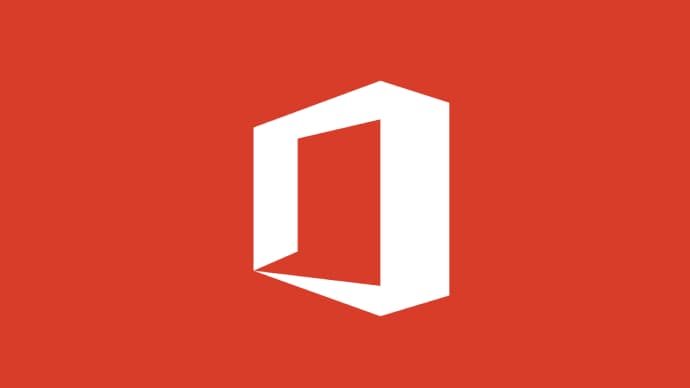
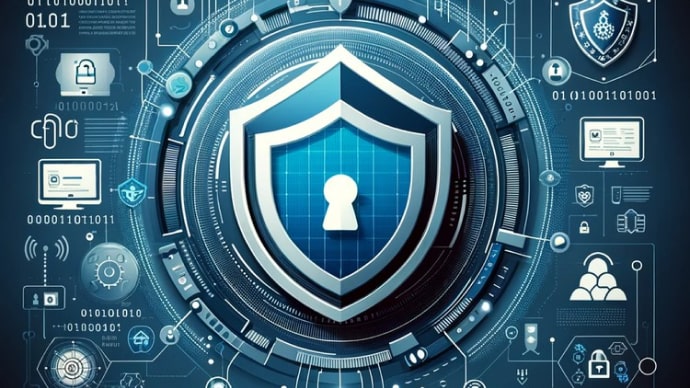

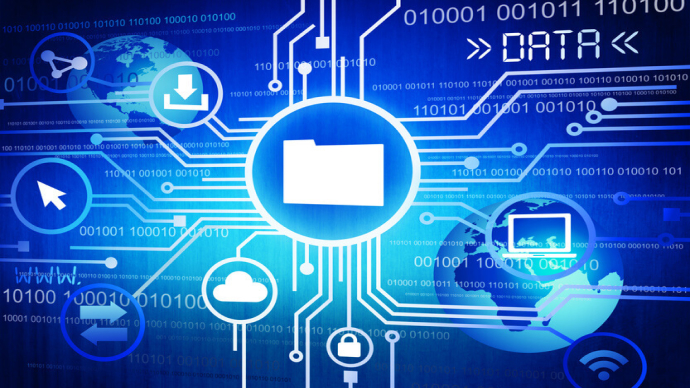
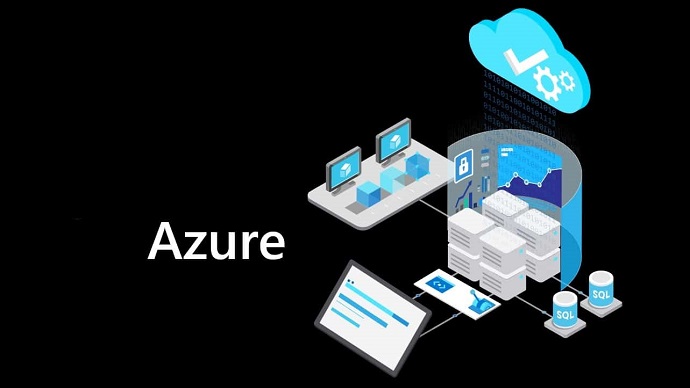






SPECIAL OFFER: GET 10% OFF
This is ONE TIME OFFER

A confirmation link will be sent to this email address to verify your login. *We value your privacy. We will not rent or sell your email address.
Download Free Demo of VCE Exam Simulator
Experience Avanset VCE Exam Simulator for yourself.
Simply submit your e-mail address below to get started with our interactive software demo of your free trial.